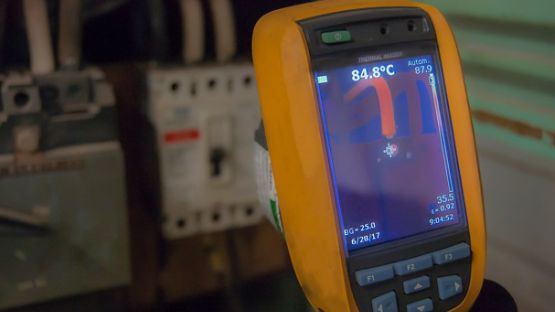It’s costly and can have an impact on everything from sales to your company’s reputation. Older manufacturing equipment and not following manufacturer recommended maintenance schedules can increase these risks. Planning ahead can help you avoid them. Equipment breakdown insurance coverage can help protect your business in the event of unplanned downtime.
Maintain manufacturing equipment
Because your manufacturing equipment is the backbone of your business, keeping that equipment running is critical for minimizing downtime and the lost revenue that follows. Conduct frequent housekeeping, follow manufacturer recommended maintenance schedules of equipment and electrical supplies, and provide continuous operator training to help ensure reliable performance from your manufacturing equipment. Here are some actions you can take to help you avoid equipment breakdown, reduce downtime and prevent emergency shutdowns:
- Install surge protection devices to prevent surges caused by events that are equipment induced or lightning generated.
- Have thermography equipment in place to monitor vital systems for infrared energy emission. This technology can detect anomalies such as abnormal temperatures in bearings and .
- Install maintenance software to give you real-time data and alert you when a failure is imminent.
Plan a total shutdown of manufacturing equipment
Having a planned shutdown of your manufacturing equipment to ensure that all parts and components are properly cleaned and maintained, can help improve the performance and safety of your equipment. More importantly, planned shutdowns can also extend your equipment’s longevity and avoid unexpected breakdowns. Other benefits include the following:
- Increased employee focus during inspections and maintenance
- Ability to schedule in specialized technicians
Stock up on spare parts and service contracts
Unexpected repairs can mean unexpected delays. Minimize the impact of these by following these tips:
- Maintain a supply of parts that are prone to failing and/or are difficult to source
- Buy cost-effective service contracts that allow for an unlimited number of visits and services at a set price
- Consider the availability of warranties on equipment
- Adhere to manufacturer recommended maintenance schedules
Research the benefits of old versus new equipment
Is it time to invest in new equipment? That depends. Older machinery is more likely to break down and may cost more to repair, but it’s also familiar to your workers and may be adequate for your current needs. New equipment likely means additional capital and financing costs. There may also be costs associated with training on the new equipment. However, new equipment also offers possible efficiencies, technological advantages and safety enhancements, so depending on your needs, investing in modern machinery may be a good option.
To find out what is best for your business, compare the cost of new machinery with the costs associated with maintaining your existing older machinery, including any costs you may incur when older equipment shuts down, such as lost revenue. In your analysis, be sure to consider the following questions:
- Does your current equipment or capacity prevent you from bringing your products to market?
- Would new technology-based machinery fit into your current operation?
- Would new equipment provide substantial economic benefits including increased efficiency?
Consider equipment breakdown coverage to protect against unexpected downtime
Your insurance broker is a valuable source of information for identifying and mitigating risk within your business, including equipment breakdown coverage. Contact your broker for additional information or for any questions you have about protecting your business, including coverage options so you can ensure you have ample protection should an insured loss occur. If you don’t have a broker, use our Find a Broker tool to find one in your area today.
Sources
Hall, R. (1997, 12). Analysis of Mobile Equipment Maintenance Data. Retrieved from Collections Canada: https://www.collectionscanada.gc.ca/obj/s4/f2/dsk2/tape17/PQDD_0026/MQ37954.pdf?viewType=Print&viewClass=Print
Robert, S. (2012, March 23). A PM dichotomy: Turning equipment needs more, gets less. Retrieved from Canadian Metalworking: https://www.canadianmetalworking.com/article/metalworking/a-pm-dichotomy-turning-equipment-needs-more-gets-less













